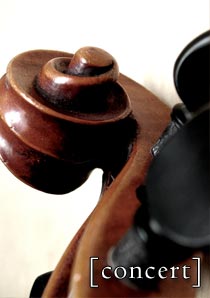Dance of Dragons
| Year Composed: | 2008 |
| Instrumentation: | 3 vln, 2 fl, pno, 2 tpt, 3 tbn, 2 perc, 2 taiko |
| Duration | 13 minutes |
| I | Head (Introduction) |
| II | Neck (Bridge) |
| III | Body |
| IV | Tail (Coda) |
Audio Excerpts (MP3)
Program Notes
Although the title takes its inspiration from George R.R. Martin's fictional series, "A Song of Ice and Fire," the music is not programmatic in any way. Instead, it is concerned with the channeling of 'primal' sound into a specific temporal form. This form, or shape, is modelled after the physical anatomy of a dragon (head, neck, body, tail & wings), although the relationship is of course an abstract one. The dragon thus becomes a mythical symbol unto which the aggressive human ritualism found within the piece is projected.
Program Notes
Although the title takes its inspiration from George R.R. Martin's fictional series, "A Song of Ice and Fire," the music is not programmatic in any way. Instead, it is concerned with the channeling of 'primal' sound into a specific temporal form. This form, or shape, is modelled after the physical anatomy of a dragon (head, neck, body, tail & wings), although the relationship is of course an abstract one. The dragon thus becomes a mythical symbol unto which the aggressive human ritualism found within the piece is projected.
In my compositional travels I have become more and more convinced that musical coherence and meaning are derived from sources deeper than simply the unification of musical material. In this piece I have deliberately avoided the use of melody, motive, structural repetition, or any harmonically consistent (or even consistently juxtaposed) system. Musical elements do recur, but in loose, haphazard fashion. Instead, I focused on achieving direction and momentum through purely structural means.
The first section serves less as an introduction to the musical material than it does to introduce, visually, the main players: the three solo violinists, together representing the ‘head’ of the dragon (an abstract reflection of Martin’s oft-repeated quote, “The dragon has three heads.”)The three heads then begin to ‘drag’ the rest of the ensemble (symbolizing the bulk of the dragon) with it through a churning landscape of tonal, modal, and heavily chromatic textures. The second section, “Neck”, is more active, bulldozing forward in stream-of-consciousness fashion. By contrast, I conceived “Body” as a virtuosic, almost jazz-like ritual, with the principal soloists of each section (violins, piano, brass quintet) alternating with a communal refrain symbolized by the piccolos and taiko drums. The fourth section, “Tail”, attempts to conclude the piece in a manner that is as surprising as it is dramatic.
Performances
- January 31, 2008 - Mark Johnston, Elizabeth Andrews, Maia Broido, violins; Kaili Maimets, Sara Moorhouse, flutes; Mark Andrews, piano; Steve Arsenault, Marcel Sekine, trumpets; Annemieke Vanderkraay, Stuart Bremner, Nelson Garces, trombone; Greg Samek, Tricia Mangat, percussion; Michelle Colton, Lance McMillan, taiko. Conducted by Brian Current. Walter Hall, Faculty of Music, University of Toronto

